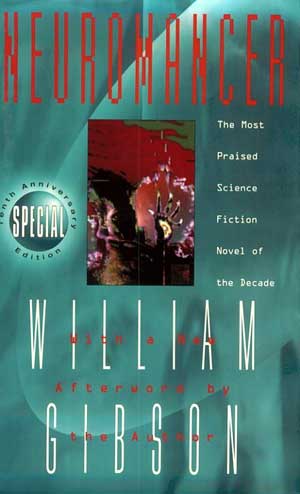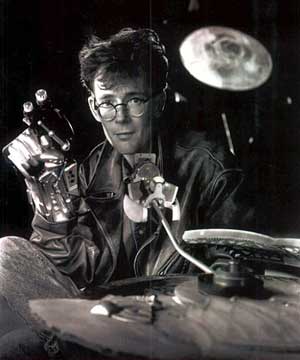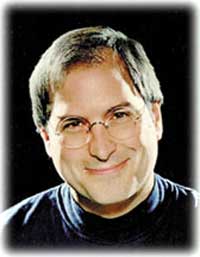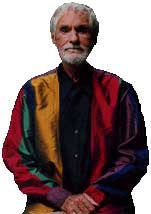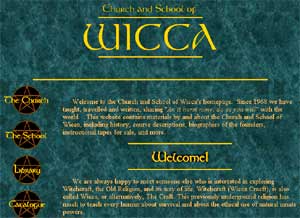Fusing Technology and Magical Consciousness in the Modern World
by Nevill Drury
______________________
As we embrace the new millennium, it is surely worth considering how the rapidly unfolding technologies of cyberspace and the ancient magical approaches to sacred space can actually connect with each other. The actual word cyberspace was coined by William Gibson, who used it in his 1984 novel Neuromancer. Gibson described a scenario where 'console cowboys' could put on their cyberspace helmets and project their awareness into three-dimensional ' virtual ' environments. Here Gibson was anticipating that the human imagination would create its own perceptual ' realities' within a technological setting. Now, just eighteen years after the publication of Gibson's novel, the realm of virtual reality has already established itself as a valuable tool in such fields as architecture and medicine. Meanwhile, the Internet is rapidly becoming the preferred means of communication around the planet, and ventures into cyberspace are an everyday occurrence. And yet one would have to concede that the concept of cyberspace itself has interesting philosophical connotations.
In her recent book, The Pearly Gates of Cyberspace, science writer Margaret Wertheim argues that the Internet is providing us with a new concept of space that did not exist before - the interconnected 'space' of the global computer network [1]. And, as she points out, this is a very recent phenomenon indeed. During the early 1980s few people outside the military and academic field of computer science had network access, but now there are billions of webpages on the Internet. ' As of mid-1998,' writes Wertheim, ' there [were] over 100 million people using the Internet regularly, and it is estimated that in the next decade, there will be close to one billion people online. In just over 25 years, this space has sprung into being from nothing, making it surely the fastest-growing territory in history.'
However, it is the actual nature of the cyberspace experience that Wertheim finds so fascinating. When one person communicates with another online there is no sense of physicality, for cyber-journeys cannot be measured in a literal sense. ' Unleashed into the Internet,' she says, ' my "location" can no longer be fixed purely in physical space. Just "where" I am when I enter cyberspace is a question yet to be answered, but clearly my position cannot be pinned down to a mathematical location.' So all we can really confirm about the nature of cyberspace itself is that it involves a form of digital communication where information is relayed back and forth from one computer site to another, and where people share the outpourings of each other's minds.
This is not simply a communication of literal information, however. As many Internet enthusiasts have discovered, the world of cyberspace is also a realm where fantasy personas can be created in virtual reality - where human beings can interact with each other in ways limited only by their imagination. Individuals can pose as members of the opposite sex, as fantasy beings - even as dark and evil gods - and this has become a central feature of the development of role-play on the Internet. So in a very specific way the Internet has become an extension of the human psyche, a forum for both its realities and its fantasies. From an esoteric or mystical perspective, though, what is so intriguing about this interplay between technology and the human imagination is that here we are dealing with the equation As I imagine, so I become - and this is the very essence of magic. It comes as no surprise, then, that neopagans and occultists of all descriptions have been quick to embrace the Internet as a new means of communication. For many, the World Wide Web provides a pathway into the mythic conjurings of the world-at-large - an enticing and increasingly seductive means of engaging with the global imagination.
-97-
Techno-pagans and Digital Magic
The relationship between neopagans and technology appears to have its roots in the American counterculture itself, for it is now widely acknowledged that the present-day computer ethos owes a substantial debt to the psychedelic consciousness movement. The conservative Wall Street Journal even ran a front-page article in January 1990 asking whether virtual reality was equivalent to 'electronic LSD' [2]. It would seem that the somewhat unlikely fusion between pagans and cyberspace arose simply because techno-pagans are capable of being both technological and mystical at the same time. As cyber-punk novelist Bruce Sterling has written : ' Today, for a surprising number of people all over America, the supposed dividing line between bohemian and technician simply no longer exists. People of this sort may have a set of windchimes and a dog with a knotted kerchief 'round its neck, but they're also quite likely to own a multimegabyte Macintosh running MIDI synthesizer software and trippy fractal simulations' [3].
The American psychedelic culture of the late 1960s and early 1970s was essentially about experiencing the psyche through mind -altering drugs - the word 'psychedelic' itself literally means 'mind revealing' - and this type of consciousness exploration would have a direct impact on the rise of the new technology. According to Mark Dery, Timothy Leary regarded the rise of the personal computer phenomenon as a clear vindication of the counterculture for he believed that without the psychedelic revolution the personal computer would not have burst onto the world scene so soon. 'It's well known,' he told Dery, 'that most of the creative impulse in the software industry, and indeed much of the hardware, particularly at Apple Macintosh, derived directly from the sixties consciousness movement.. [The Apple co-founder ] Steve Jobs went to India, took a lot of acid, studied Buddhism, and came back and said that Edison did more to influence the human race than the Buddha. And [Microsoft founder Bill] Gates was a big psychedelic person at Harvard. It makes perfect sense to me that if you activate your brain with psychedelic drugs, the only way you can describe it is electronically' [4].
What Mark Dery calls the 'cyberdelic wing' of the computer movement clearly has its roots in the 1960s counterculture - indeed, Terence McKenna is a shining example of the fusion between technology and metaphysics. Wiccan computer buff Sara Reeder also remembers the early years well: ' Silicon Valley and the modern Wiccan revival literally took root and grew up alongside each other in the rich black clay surrounding San Francisco Bay...both blossomed in the 1960s - the Valley through the miracle of the space program, the Pagan community by way of Haight Street's prominence as the worldwide Counterculture HQ' [5]. At this time, Timothy Leary, as patron saint of the hippie movement, was urging his followers to 'turn on, tune in and drop out' on LSD, a psychedelic synthesised from ergot in a Swiss laboratory. A generation later, he would switch his allegiance to the computer generation, announcing that 'the PC is the LSD of the 1990s'. For Leary, there was a clear relationship between the consciousness movement and the new technology :
What is so intriguing about our own era in history is that the human quest for knowledge and understanding in the last 25 years has seen an amazing blend of shamanic techniques, psychedelic drugs and the international global boom in resurrecting the pre-Christian, pagan, totemic and Hindu traditions. At the same time, with these computers...you have a situation where you can walk around in realities of your own construction. So we are very much on a threshold. I don't want to put any limits on what I'm saying, but here we have ancient techniques merging with the most modern. Computers give us the ways to communicate with the basic language of the universe - which is quanta-electronic. Matter and bodies are just electrons that have decided to come together, buzzing around with information [6].
-98-
Meanwhile, Stewart Brand, former Merry Prankster and creator of the Whole Earth Catalogue, would also become an icon of the cyberdelic movement. He has been credited with creating the computer hacker subculture as the direct result of an article he published in Rolling Stone magazine in 1972. According to Dery, these psychedelic roots have left their mark , and the 'cyberdelic' phenomenon as he understands it now has clearly identifiable characteristics, encompassing a cluster of subcultures - among them Deadhead computer hackers, "ravers" ( habuitués of all-night electronic dance parties known as "raves"), techno-pagans, and New Age technophiles. Cyberdelia reconciles the transcendentalist impulses of sixties counterculture with the infomania of the nineties. As well, it nods in passing to the seventies, from which it borrows the millenarian mysticism of the New Age and the apolitical self-absorption of the human potential movement ' [7].
Cyberculture enthusiast Erik Davis has a similar perception, describing technopagans as ' a small but vital subculture of digital savants who keep one foot in the emerging technosphere and one foot in the wild and woolly world of Paganism' [8]. Meanwhile, for Douglas Rushkoff, author of Cyberia : Life in the Trenches of Hyperspace, ' the neopagan revival incorporates ancient and modern skills in free-for-all sampling of whatever works, making no distinction between occult magic and high technology. In the words of one neopagan, "The magic of today is the technology of tomorrow. It's all magic. It's all technology" [9].
Neopagans generally regard technology and magic as interchangeable. Ever pragmatic, they seem to be primarily concerned with what works. If technology is effective in producing something physically useful, and if rituals and magical incantations can produce a specific spiritual or psychological outcome, for many neopagans this means they are compatible. According to Erik Davis , '...it is this pragmatic hands-on instrumentality that allows some Pagans to powerfully reimagine "technology" as both a metaphor and a tool for spiritual work' [10].
Many Wiccans openly affirm the relationship between magic and the computer culture. An urban neopagan witch named Green Fire told Douglas Rushkoff that ' high technology and high magic are the same thing . They both use tools from inner resources and outer resources. Magic from the ancient past and technology from the future are really both one. That is how we are creating the present ; we're speeding up things, we are quickening our energies; time and space are not as rigid as they used to be...Those of us who know how to work through time and space are using our abilities to bend time and space into a reality that will benefit people the most.... We humans are all shape-shifters. We just learn to access our DNA codes. It's very computer-oriented. We are computers; our minds are computers, our little cells are computers. We are bio-organic computers...' [11].
Other neopagans regard the new technology as a type of freedom. For Californian neopagan writer Tom Williams,' Far from being seen as the tool of the oppressor, technology harnessed with the proper spiritual motivation can be a blast of liberation ...Take up the athame, the wand and the light-sound machine, the cup and the pentacle and the oscilloscope and the computer. Dedicate them to the service of the Life Force, to the Unio Mystica and to the praise of the Great Mother and weave their power together into ritual, song and the sacred accomplishment of the Great Work !' [12] Meanwhile, Michael Hutchison - author of the intriguingly titled bestseller Mega Brain Power : Transform Your Life with Mind Machines and Brain Nutrients - feels much the same way. For him, what he calls 'consciousness technology' is coming to the aid of humanity in an unexpected way: ' To some it may seem odd and paradoxical that machines - the synthetic, hard, material devices of this electronic temporal reality - may serve as gateways to the spirit, tools of transcendence. But in fact this fusion of spirituality, or the "inner quest" , and science, "the external quest" , is the central force of the emerging new paradigm' [13].
-99-
Many neopagan groups use computer technology and the Internet to advise their friends and members about seasonal rites, celebrations, workshops and conferences, and they also provide information on pagan rites of passage, including handfastings (weddings), child-blessings and funerals. For example, the London-based Pagan Federation, established in 1971, uses the Internet to promote neopaganism, Druid, Wiccan, Odinic, Northern, Celtic, Eco-magic and women's spirituality groups, and its American counterparts, like the Church of All Worlds, Circle Sanctuary and the Church of Wicca, do much the same thing for their equivalent memberships. Contemporary pagans also communicate with each other through 'newsgroups' - discussion forums where they can chat in real time about various topics like magical ceremonies, spells and the occult powers of herbs. Jem Dowse also makes the point that new pagans who happen to live in the American Bible Belt make use of this new technology to access like-minded people without fear of repercussions [14].
However, some techno-pagans have sought to extend the scope of their digital magic still further, by conducting rituals over the Internet, and even establishing 'virtual' shrines in cyberspace. Wiccan practitioner Sara Reeder explains that ' while Christians and other mainstream religions ignored the Net for years - their members had an established network of churches and clergy to turn to - we became the first religious movement to depend heavily on it for growth and cohesion. And cyberspace, in turn, became the first mass Pagan gathering place since ancient times' [15]. For her, computer technology does not restrict the essential poetry of the ritual experience :
Our rituals have always taken place in the realm of the imagination, so we can make effective ritual anywhere we can exercise our love for poetry and storytelling. I've led online rituals for thirty in chat rooms that allowed us to talk to each other two lines at a time; some of them were as memorable and powerful as any I've attended in person... As VRML and other technologies open the sensual bandwith, allowing us to share songs, images, and even virtual bodies to the mix, cyberspace ritual will allow us to open up our private dreamscapes, and share our internal visions with each other in much more intimate ways. The traditional Neo-Pagan focus on individual creativity, combined with our emphasis on poetry and fluid ritual forms, may well make us the first to pioneer online altars and sacred sites, once more setting the example for other religions to follow [16].
Some personal reflections
So where does this leave us as we embrace the new millennium ? Where are the magical undercurrents in contemporary western culture taking us ? Are we searching now for new mythologies to help us define our future ? It seems to me that a distinct polarity is now emerging - requiring us to make a choice which takes us potentially in two quite different directions. The first of these two options focuses primarily on the sacred dimensions of Nature, and engages us in a magic of the Earth and Cosmos. This is of course the option chosen by devotees of Wicca and Goddess worship, who venerate the gods and goddesses associated with the cycles of the Moon and Sun in the natural environment. Then there is another option - which takes us still further into the archetypal realms of cyberspace and virtual reality as their myriad potentials unfold before us. And although techno-paganism seeks to embrace both of these dimensions, it seems to me that the main pathways within western magic will begin increasingly to diverge. Increasingly, I believe, a choice will be made between Nature and the new technology.
As has been the case for some time now, magic in the twenty-first century will essentially be all about the quest for personal transformation. Occultists of all persuasions will continue to invoke their gods and goddesses as archetypes of the divine potential they seek within themselves. However, clear options now present themselves : can sacred inspiration be found both within the natural world and also in the furthest reaches of cyberspace ? As the information superhighway embraces ever-increasing levels of intensity, I believe many magical devotees will feel powerfully drawn towards embracing the new technology in all its diversity. Sacred shrines and archetypal symbols will find a richer and more convincing graphic expression on the Internet so that they really do become magical doorways in their own right - the cyberspace equivalent of the Magic Theatre in Hermann Hesse's novel Steppenwolf. The magical explorers entering these doorways will then engage ever more completely in virtual worlds, blending technological motifs with mythic archetypes to produce fusions we can only begin to envisage at the present time.
-100-
Other magical practitioners, I believe, will turn more completely towards the esoteric traditions of former cultures and will choose instead to identify only with the mythic archetypes of the past - but those which have a sense of resonance and meaning for the present. Already this has begun to happen. The contemporary magical revival has seen not only a return to medieval esotericism and the mythic traditions of the Celts, as well as a revival of interest in the gods and goddesses of ancient Greece, Rome, Egypt and Mesopotamia, but there has also been a very specific resurgence, in certain quarters, of traditions like Odinism and Druidry, and the magic of the various shamanic cultures around the world. In many cases this return to an archaic past also brings with it a thirst for authentic simplicity - for rituals which embrace the earth, sun, moon and sky as they are found in the real world, not in the virtual realms of cyberspace.
For this reason, I believe that many magical devotees, in time, will take the decision to withdraw from the new technology, at least in part - using it peripherally perhaps as a means of information exchange, but channelling the quest for personal transformation into an engagement with completely natural processes. Andrew Siliar, a neopagan from Arizona, makes this point very effectively in a letter published in the Wiccan journal Green Egg :
Paganism is a Nature religion, rooted deep in the Earth, honoring the Gods and Goddesses, feeling the heartbeat of the Mother Earth, loving and honoring all of Her creatures. And now we have this wonderful new technology, along with computer graphics. We can link up with other people on-line, and now we can be techno-witches, and cyber wizards...I'm sorry, but that doesn't sound like much of a Nature Religion to me anymore... I need no on-line link to let me feel the power of the Goddess, I just touch the Earth and connect [17].
So we may well find ourselves engaging in the future with two main traditions : natural magic and techno-cybermagic - along with all the assorted mythologies they will bring in their wake. Meanwhile, the magical quest itself remains a journey of self-knowledge and transcendence, and magical devotees and practitioners will continue to find their sense of sacred meaning in their own way.
Nevill Drury is the author of internationally published books on the magical traditions. His most recent publications include Exploring the Labyrinth, Everyday Magic, The History of Magic in the Modern Age, and a work of mythic fiction, The Shaman's Quest – all of which have either been published, or are forthcoming in the United States.
*********************
NOTES
1) see Margaret Wertheim, The Pearly Gates of Cyberspace : A History of Space from Dante to the Internet, (New York: Norton, 1998)
2) see Howard Rheingold, Virtual Reality, (London: Mandarin, 1992), p.354
3) see Bruce Sterling, The Hacker Crackdown : Law and Disorder on the Electronic Frontier, (New York: Bantam, 1992), p.235
4) see Mark Dery, Escape Velocity : Cyberculture at the End of the Century, (London: Hodder, 1996), p.28
5) see Sara Reeder, ' Children of the Digital Gods ' in Green Egg, vol.29, no.129, August-September 1997, p.15
6) see ' Computers, Consciousness and Creativity - an interview with Dr Timothy Leary ' in Nevill Drury, Echoes from the Void, (Dorset: Prism, 1994), p.172
7)see Mark Dery, Escape Velocity, loc cit., p.22
8) see Erik Davis, Techgnosis: Myth, Magic, and Mysticism in the Age of Technology, (Three Rivers Press: 1999); see also 'Technopagans : May the Astral Plane be Reborn in Cyberspace', Wired, July 1995, p.128
9) see Douglas Rushkoff, Cyberia : Life in the Trenches of Hyperspace, HarperCollins, San Francisco 1994, p.143
10) see Erik Davis, 'TechnoPagans : The Roots of Digital Magick' in Green Egg, vol.29, no.129, August-September 1997, p.41
11) see Douglas Rushkoff, Cyberia, loc cit., pp.145-146
12) see Tom Williams, ' Navigation Systems for the Spirit ' in Green Egg, vol.29 no.120, August-September 1997, p.39
13) see Michael Hutchison, Mega Brain Power : Transform Your Life with Mind Machines and Brain Nutrients, Hyperion, New York 1994, p.431
14) see Jem Dowse, 'Cyberpagans !' in Pagan Dawn, no.119, Beltane 1996, p.11
15) see Sara Reeder, ' Children of the Digital Gods ', loc cit., p.16
16) ibid, p.17. Some readers may be interested to visit a 'virtual shrine' on the Internet. Renée Rosen has her shrine to Lilith at the following website : http://www.lilitu.com/lilith
17) see Andrew Siliar, 'Cyber-Space Cadets' in Green Egg, vol.29, no.120, August- September 1997, p.65
